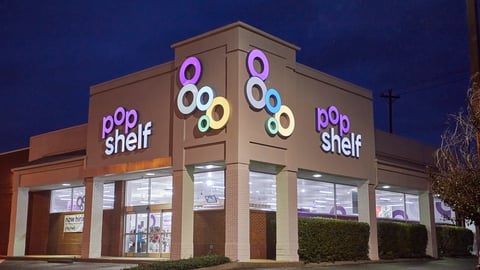Going to Extremes
New York State is a world of extremes. Home to the biggest city in the country, it encompasses smaller cities along with some of the nation’s most rural areas. Then again, if you want rural, try Vermont, where no more than a few thousand people live within a 10-mile radius. And then there’s Rhode Island: tiny state with mighty markets.
The Big Apple and the Empire State: Welcome to New York City, where Forest City Ratner Cos. and the Syosset, N.Y.-based Blumenfeld Development Group are working on a project that most developers would consider impossible: assembling six Upper East Side acres right on the East River for the 500,000-sq.-ft. East River Plaza that will house the first-ever Target in Manhattan.
An affiliate of Forest City Enterprises in Cleveland, Forest City Ratner has completed projects in each of the five boroughs, with an eye toward keeping retail money in the city, said Richard Pesin, executive VP and director of the retail development group with Forest City Ratner.
Developing in the five boroughs isn’t for everyone, but it is what Forest City Ratner does. In 1992, Bruce Ratner, the company’s chairman, commissioned a study that showed retail dollars flowing out of the city into the suburbs. “The company has spent more than a decade trying to keep those dollars in the city, which remains understored and underserved,” said Pesin.
Retail development in, as well as around, the city is difficult not just because land is tough to come by. It is difficult even to imagine projects of the scale required to make them profitable.
Imagine a lifestyle center with 1.2 million sq. ft. of retail space, 1,000 residential units, 150,000 sq. ft. of office space and room left over for a hotel.
Last summer, Forest City Ratner closed on a $630 million construction loan, the largest in company history, to build that project. It’s called Ridge Hill, and it’s in Yonkers in Westchester County. Ridge Hill is the company’s first retail project outside of New York City, and it just broke ground on Nov. 28.
Adam Ifshin agrees with Ratner that New York City is underserved. President and CEO of DLC Management Corp. in Tarrytown, N.Y., Ifshin also contends that the same is true of New York City’s suburbs. “In almost any close-in trade area, there is unmet demand from tier-1 national retailers,” he said. “They want more space than they can find, and they are willing to pay tremendous rents.”
Newburgh, N. Y., is an example. In recent years, national retailers such as Kohl’s, Lowe’s, Staples and Bed Bath & Beyond have signed leases in Newburgh developments. DLC’s own Mid Valley Mall has brought in AJ Wright, Dollar Tree and Price Chopper. Wal-Mart has expanded to a Supercenter. And Costco and Dick’s Sporting Goods are working on approvals for stores.
DLC has fanned demand by redeveloping three major centers in suburbs located close to New York City. They include Spring Valley Marketplace in Spring Valley, Beach Shopping Center in Peekskill, and Mid Valley Mall. Each redevelopment brought in new national anchors and replaced obsolete stores.
In Middletown, National Realty and Development Corp. (NRDC) recently redeveloped the Orange Plaza mall. “We turned it into a power center with a Wal-Mart Super-center, Kohl’s, Burlington Coat Factory, Home Depot and Bed Bath & Beyond,” said John Orrico, president of NRDC, headquartered in Purchase, N.Y.
Looking further north, retail development markets become rural, lowering rents and sales volumes. Instead of retailers competing for space, developers compete for retailers. “The retail names change, too,” continued Orrico. “Retailers that do well upstate include Tractor Supply, Big Lots and, of course, Wal-Mart.”
Not many developers straddle New York City and upstate New York, but Developers Realty Corp. in West Hartford, Conn., has centers in Brooklyn and Massena, an upstate city literally on the Canadian border.
Dykers Plaza, in Brooklyn, is a 27,000-sq.-ft. building with two floors that houses a Casual Male, Lerners, Modell’s sporting goods, RadioShack and a Verizon shop.
Upstate at the Massena Plaza, Developers Realty is building out a big-box center anchored by a 130,000-sq.-ft. Home Depot. Available space totals 220,000 sq. ft.
Other-worldly Vermont: Vermont can give a retail developer the chills, and not just because it’s cold. For example, the state has no lifestyle centers. None. The malls, and the downtowns of tourist areas like Stowe, do have lifestyle stores. “They still have downtowns in Vermont; that’s why there are no lifestyle centers,” quipped NRDC’s Orrico.
Vermont has population pockets, continued Orrico, in Brattleborough, Derby and Burlington. But development is strictly controlled. Officials would rather see properties recycled, which is what NRDC does.
In Brattleborough, NRDC redeveloped an old shopping center and brought in Home Depot as an anchor. In Derby, the company bought an old Ames center and re-tenanted it with a Shaw’s Supermarket, which brought in new retailers.
Overall, Vermont is a tough, rural market for retail development. How rural? Have you ever seen demographics like these: In Brattleborough, 17,000 people live within the five-mile ring. Average household income is just under $50,000. Think that’s rural? In Derby, 16,000 people live within the 10-mile ring. Now that’s rural. Then again, Derby’s average household income beats the national average handily at $56,000.
Afew words about little Rhode Island: If you don’t expect much retail development to be going on in Rhode Island, you’re wrong. “There has been a lot of really good development in Rhode Island,” said DLC’s Ifshin. “Lincoln Mall, Rhode Island Mall and a number of others were de-malled successfully. Bigbox tenants have developed a strong appetite for Rhode Island space.”
The state has one of the better stretches of Interstate 95, continued Ifshin, and there has been development off of every I-95 exit in the state, and also off of Route 1, which runs parallel.
Enough said.






